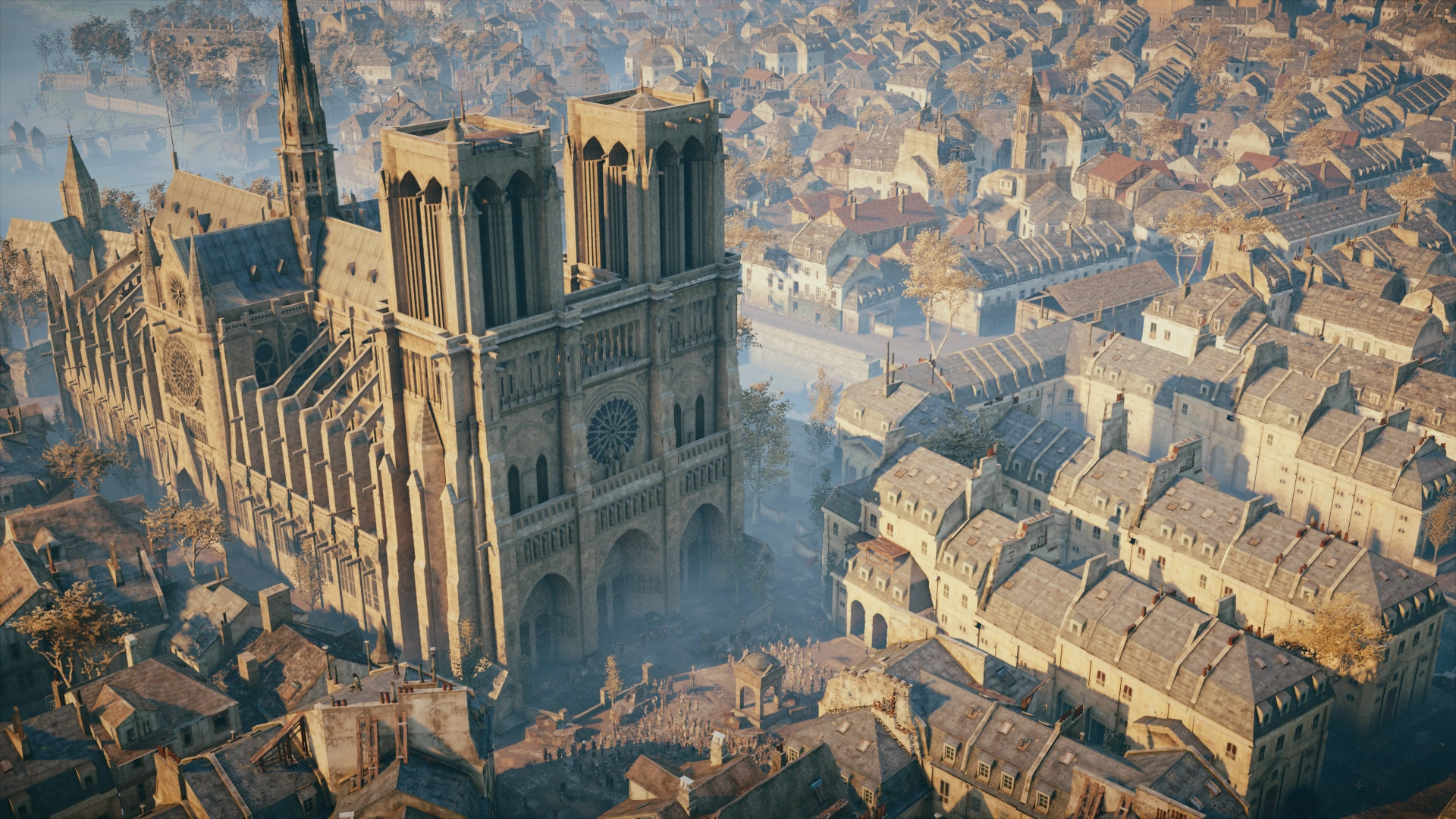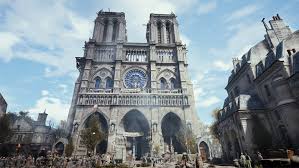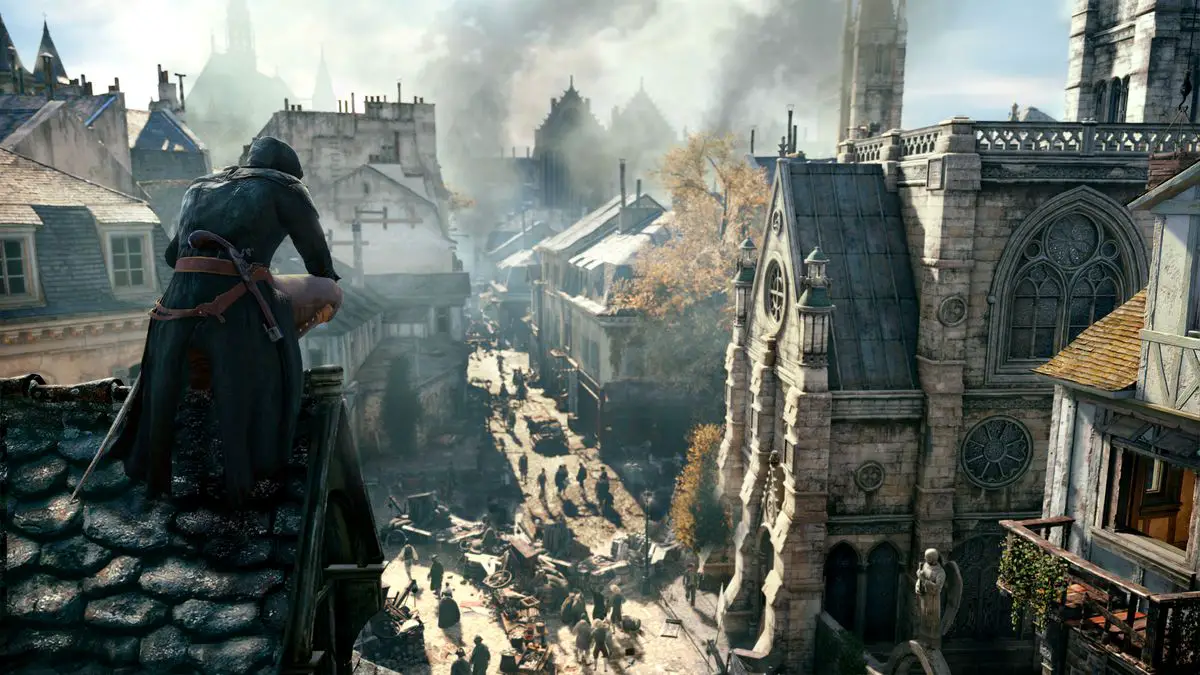Architecture significance in video games guide, Online immersive virtual environment advice, 3D gaming tips
Architecture Significance In Video Games
post updated 10 February 2024
There are 30 seconds left on the clock, and you still don’t know where the last enemy is hiding.
As a last resort, you use your binocs to search the southeastern side of the building because that’s where the last shot was fired from. At the same time, you also happen to notice a slightly odd shape sticking out from under the bushes, but there’s no way to be sure.
With ten seconds left, you decide to fire at the supposed target – bang! Suddenly, the screen flashes a victory sign, and your friends jump all over you in excitement.
This is the thrill of playing video games, but what if we told you that the real winner is that short bushy area where the enemy was hiding? Before you call us crazy, read this guide to know what we’re talking about.
4 May 2022
Architecture Significance Found In Video Games
[toc]

Video Game Architecture
Ever wondered why video gaming is so immersive, encouraging people to spend longer times in a virtual world than they would a decade back? It’s because the video game industry has updated its game designs with more realistic and absorbing virtual environments.
As the internet has brought us closer, the video game development process has evolved. Today, you can immerse yourself in the thrill, heartbreak, and joys of gameplay in highly detailed worlds where architecture is an essential part of the entire experience.
With life-like graphics and accurate representations of fictional or real worlds, people can play and live out the fantasy lives of their favorite characters. In effect, video game architecture has changed drastically to enhance the modern gaming experience.
So, let’s check out why game designers spend maximum time on architectural designs.
What Is Architecture In Video Game Design?
Compared to real-life architecture, the architecture in virtual worlds represents the theme, setting, or mood within the game. In other words, the virtual architecture helps users respond and interact with the game for an immersive experience.
This concept art is the responsibility of architectural designers who build environments and evoke emotions through superior gameplay. Each game will have a unique background to make the overall experience for the gamers more exciting, such as in Assassin’s Creed.
Without sounding too dramatic to non-gamers, a well-designed virtual space can subtly express an idea, feeling, or concept. Naturally, the importance of in-game architecture can’t be understated, so keep reading to know why it’s important.
Importance Of Architecture In The Virtual World Of Gaming
1. Imagination
Albert Einstein had said that imagination is more important than knowledge, and game designers have taken this to heart. If there’s one place where they can experiment with various ideas or concepts, letting their imagination run free, it’s in a virtual space.
Before gamers take over, designers have fun creating buildings, structures, or elements in a game that will evoke emotion from the players. The best part is that they can break away from real-life constraints like money, time limits, labor, and limited space to create a world of infinite possibilities.
It’s also possible to form a story, using the latest tools and design techniques, for an ultra-immersive and luxurious gaming experience. Thanks to architects and their creative processes, game design has transformed considerably for players to enjoy themselves.
2. Realistic Concepts
Speaking of enjoyment, it’s the storyline that helps virtual spaces transcend the boundaries of the imaginative world. And as many gamers will agree, having a well-thought-out plot line is necessary for an enthralling and immersive experience.
At the end of the day, video games offer us a release from our mundane lives, as interacting with the characters and engaging with the story gets our hearts racing. And if the architectural building blocks of the game aren’t designed properly, it can ruin the entire experience.
At this point, you might be thinking – what if the gameplay is good? Good gameplay is essential, but it can never compensate for poor design.
The trick is to include cues and inspirations from the real world, ensuring that a player finds it more captivating. For instance, popular video games focus on little details like the sound of running feet or that swish when a character unsheathes their sword, making the game more life-like.
This lends the game authenticity, which is why players become engaged when faced with challenging scenarios. Long story short, game designers have to create an exhilarating atmosphere for more people to play the game.
Over the years, new technology and better skill sets have given rise to hyper-realistic formats suitable for all gamers.

3. Lasting Impression
If the video game creates a lasting impression, gamers will continue to talk about it for years to come. That’s the kind of legacy game designers want to leave behind.
For instance, do you remember the first video game that you liked? Personally, we are fans of Super Mario and would complete level after level to see if we could rescue the Princess. We even remember the flying fish, ducks, cactuses, and dragons! That’s how a good storyline and architecture remain embedded in people’s minds.
We feel that the ingredients for a good video game involve designers taking care of several aspects at once. It’s an essential part of the creative process whereby the created environment takes a life of its own through graphics, audio, and visuals translating into better gameplay.
But sometimes, despite modern games, you’ll still remember the old classics due to their super-immersive architecture.
4. Greater Engagement
Building on the earlier point, creating an engaging video game design should be the goal, allowing people to escape the real world for a few hours. Certain games like Assassin’s Creed and Counter-Strike are highly immersive, permitting you to get lost in the interior design of this created environment.
Of all the aspects, what especially stands out are the different hues, details like shadows, scenery, attire, intricate designs on weapons, etc. These finer details elevate the gameplay and promote user engagement with the storyline and characters.
While we don’t want to patronize gaming, a few hours of problem-solving and overcoming challenges in the virtual world may reduce stress. The best part is that you can play with or against anyone from across the world, overcoming real boundaries through virtual spaces.
If needed, you can even play single-player games, or whatever works to take the burden off your shoulders. And all this is possible due to enhanced game design because when combined with graphics and gameplay, the architecture allows gamers to accomplish and live out various tasks.
5. Emotional Response
Even though it might seem exaggerated, you may have seen your friends getting emotional after crossing or failing at a particular level. This is only possible when you’re completely invested in the virtual world.
We can compare it to reading a book, whereby you journey through various plots and learn about innumerable characters. The only difference with video games is that you don’t have to depend entirely on imagination, thanks to the architecture.
Just imagine yourself (we mean the in-game character) walking through the alleys of ancient Rome, avoiding enemies and searching for a way to stay alive. Doesn’t it get the blood pumping through your veins?
Moreover, as the character evolves after each successful level, it’s natural to have emotional outbursts that are further enhanced with the lighting, sound, concept, space, and design. Sometimes you may also lose track of time which is the highlight of a great game.

Function Of Architecture
If the earlier section was intended to help you understand the importance of architecture in video gaming, this section discusses how it’s beneficial for gamers.
In other words, we’ll discuss in-game tactics and strategies to understand the crucial role architecture plays in enhancing virtual reality. But before that, let’s give you a brief understanding of how architects work to design a video game.
Just as they are in charge of the building design of real buildings, gaming architects use their skills and expertise to add a sense of reality to virtual spaces. The only difference is that in video games, the focus isn’t as much on convenience as on creating challenges, obstacles, etc.
1. Obstacles
One of the main reasons people are interested in video games is the thrill of overcoming obstacles. There is something engaging about trying to accomplish a tough challenge and moving on to the next level. That’s where architecture comes in, as the virtual reality within the game will necessitate jumping, sliding, dodging, running, etc.
When you’re playing an engrossing game and pause at a particular level, you’ll always want to restart from there because of the human curiosity to know what will happen next.
2. Exploration
Probably, the most important aspect of video games is the theme of exploration, including puzzles, mazes, caves, etc., to navigate the architecture. Gamers enjoy the thrill of hiding from enemies, staying in the shadows, and exploring various terrain, so the skill of virtual architects is indispensable.
If the game is too easy, it will fail to generate curiosity, and there’s no reason you should keep playing it. Rather a world full of surprises is intriguing, encouraging players to form ideas and use elements within the video game to complete a level.
For this reason, you’ll find many games come with a map when the character has to traverse a large territory. There could be forests, jungles, deserts, and mythical creatures lurking around, which gamers explore out of interest.
The goal is to make the navigation as realistic and engaging as possible, using a combination of memory and in-game elements to find a solution. Sometimes a character may have to retrace their steps to find a missing clue or puzzle.
Moreover, a healthy mix of visual and auditory signals, such as lighting, shadows, and subtle movement, guide you through the game. This is in addition to the visual clues, like maps, that we talked about earlier.
3. Constraints
You’ll find games where the characters cannot move beyond a certain area or use a powerful weapon only once. The designers formulate these rules after taking feedback from players, ensuring that the plot results in smooth gameplay.
Suppose you can use specific tools only for particular purposes and not elsewhere, which makes the video game more interesting. Depending on your expertise, you can choose games with simple or complicated rules. This is because some people are serious gamers while others are simply looking to blow off some steam.
As a result, the designers should plan the architecture accordingly based on their target audience.
4. Camouflage
Concealment plays a massive part in architecture design, and it’s not just limited to characters taking cover from opponents. You may have to hide objects or carry out secret tasks to unlock a new level as part of the gameplay. There’s a certain thrill in finding a secret hiding spot to lay concealed while the enemy approaches you unawares.
Remember how in Counter-Strike, the bad guys would team up and hide bombs anywhere in the playing arena? The good guys would have to search for and diffuse the bomb within the stipulated time to win the round.
You may also come across hidden challenges and bonus rounds that other players don’t know about. This keeps the gamers on their toes, and they will always be on the lookout for bonus stuff.
With great architecture, the designers can take the liberty to make the video game more interesting.
5. Mystery
We bet you never thought of cities as mysterious but having appropriate architecture is often the difference between an engaging plot and one that falls flat. For instance, the physical and visual space, circulation, and comfort impact how gamers react to the prevailing atmosphere.
You should know the designers use buildings and roads to balance the positive and negative elements – the former being positive. But an effective technique to create suspense is using empty roads to contrast the buildings.
If there are people or cars in the game, you wouldn’t feel worried, compared to when the streets are empty, and you don’t know what lurks around the corner. The “built environments” can also have subtle hints like narrow paths or alien signs to grab your attention and help you progress through the game.
6. Architectural Hierarchy
An oft-forgotten tool in gaming architecture is the use of hierarchy where all elements don’t have the same importance or design. It’s easy to distinguish between various aspects through color, shape, texture, etc., allowing players to remember a specific point in the game.
Rather than putting up signs, using architectural hierarchy is a more subtle way of helping players navigate the environment. For example, the main structure of a building conveys a sense of strength if it has a strong foundation or a feeling of weakness when it’s flimsily built.
Video Games Architecture Conclusion
Did you find this guide about architecture and video game design as interesting as problem-solving in a video game?
Of course not, right? We know that playing an actual game is more enthralling than reading an article, but now you know why that is. Hopefully, you’ve got a better understanding of architecture in video games to navigate fictional worlds and easily pick up on subtle clues.
Game designers have the skill to use architecture to elevate a game to cult status. We have only offered you a sneak peek behind the scenes, not to spoil the charm of video game design but to explore its intricacies.
Trust us when we say that you’ll be able to appreciate the detailing in a game more after reading our guide, which will enhance your overall gaming experience.
What do you think of this article and the architecture significance in the game envinronment?
We would love to hear your opinion in the comment section below!
Architectural Design
Architecture Posts
Can computers replace architects?
Remodelling existing buildings decarbonisation
Video games and systems
Video intercom system for apartments
Building
Architecture Articles
Comments / photos for the Architecture significance in video games advice page welcome




